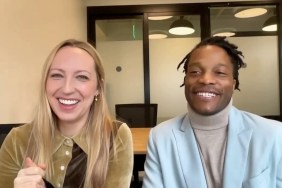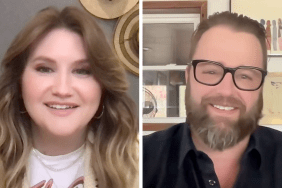ComingSoon Editor-in-Chief Tyler Treese spoke with Tobias Lindholm, who directed the upcoming crime drama The Good Nurse, which is based on the true crime book by Charles Graeber. The film is in select theaters now and will release for streaming through Netflix on October 26.
“Nurse Amy Loughren is shocked when Charlie Cullen, one of her colleagues, is found responsible for the murder of dozens of patients over a period of sixteen years, across two states and nine hospitals, without being charged,” reads the film’s synopsis.
Tyler Treese: One thing I found interesting about the film is that the viewer can have two different experiences, depending on if they know the real-life story. It’s interesting either way, as you’re seeing the reasoning behind these deaths and the failings of the healthcare system, or you’re shocked by what transpires. What was the biggest challenge in adapting this true life story?
Tobias Lindholm: I think the biggest challenge was for me to not fall into the trap of just referencing other serial killer films. There are so many great ones out there. One of my favorite films is se7en by David Fincher. We’ve seen Anthony Hopkins do a brilliant portrayal of Hannibal Lecter. Right now, there’s a wave of true crime stories. I think that for us, as storytellers, to enter the darkness of these true crime stories, we have a responsibility to find a human reason to enter — a light in there. Amy was that light for me, the hope and the humanity that she brought to the table. The biggest challenge was to just have faith that that was enough. That we didn’t need the cheap thrills but just insisting on telling the story as it unfolded for Amy would be enough. That was my biggest worry and the biggest challenge.
People are so fascinated by serial killers, so it was interesting that Amy is at the forefront. Jessica Chastain does such a great job with the performance, and you did a really good job of showing her motivation. She’s going through so much, but her family keeps her going. How important was it to show that portrayal of a real loving mother?
When I read about Amy [for] the first time, she reminded me of my mother. I have an older brother who’s almost two years older than me. Our mom worked in the healthcare system in Denmark and, without our dad being around, would still provide us with a great life and great opportunities. She would struggle so much. The strength of that, of these unsung heroes, really struck me. I loved that the reason behind this was basically that Amy really needed a friend, and Charlie was that friend. If you talk to the real Amy, that friendship was real. She used that friendship to stop him in the end. The logic behind that is an extremely human logic, I believe. That, for me, was the most important thing to focus on. So being honest [about] the struggle that she’s going through would set her up to the needs she had and would prove how strong she was even more.
MORE: Fall Interview: Grace Caroline Currey Reflects on Extreme Filming Conditions
I think what makes Eddie’s performance so haunting is that the character is a good friend. He has charming moments. It’s very nuanced in the story you tell, but he’s also this demented person, which is the scariest part. He could be anywhere and he could exist anywhere.
That is the scary part. I also think that that is, for me, a way in — I’m not American, I don’t know that much about the American healthcare system, but I know about being a human in a system, and we can see this everywhere. I guess it’s just a reminder of living up to the responsibility as human beings to speak up if we see or feel that this system is turning against us.
The interrogation scene with Eddie was so wild. How was it, getting that freak-out out of him?
Well, we had rehearsed all scenes in the script except for that one. We bet everything we had on that, if we got all the other scenes right, there would be a logic to this. So he didn’t really tell me what he had in mind, and I didn’t really tell him what I had in mind. So when he showed up on the day, I would, without him knowing or preparing for it, I would handcuff him to the table, which would limit his movement. Doing that, it made a sound — click!
I remember in the rehearsals of that, as we started the day, that sound … I saw in Eddie’s eyes right away, “Oh, there’s an idea.” So when he finally started to use that at the end of the scene and the “I can’t” rhythm that he grows into, you know, I was very impressed with that. To be honest, after the second take, I got worried [about] whether he was okay or not, because he seemed so much in it. So I went in there and then he must have sensed that I felt that way because Eddie looked up and he looked me in the eyes, smiled, and said, “I’m all right, pal.” Then he looked down again and went back into the darkness. That was one of the strongest experiences I’ve had on set.










